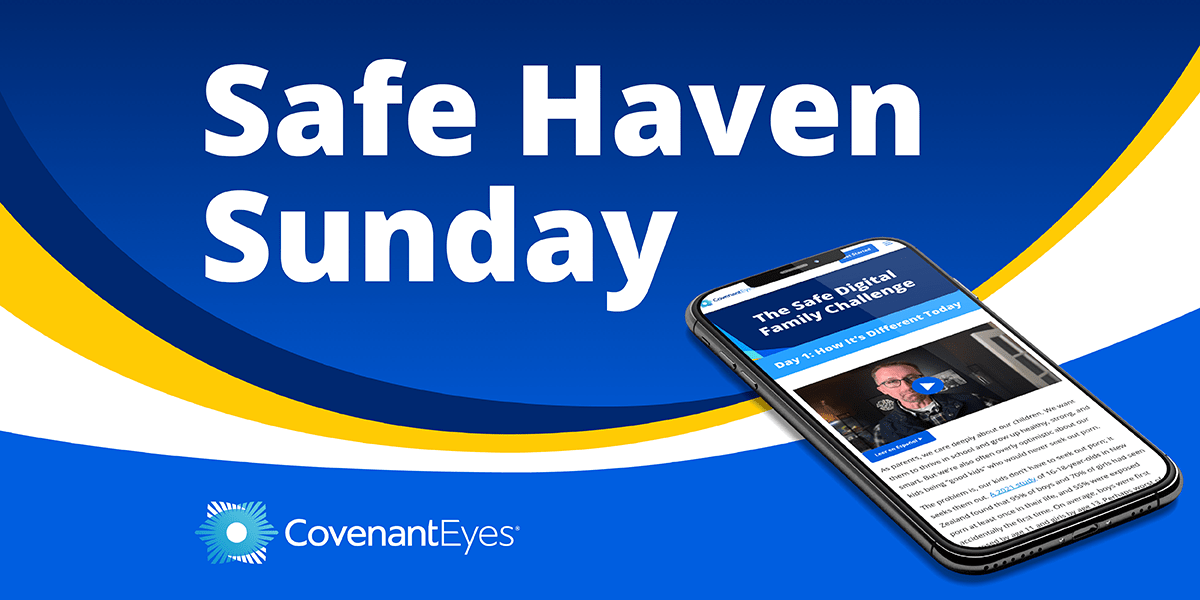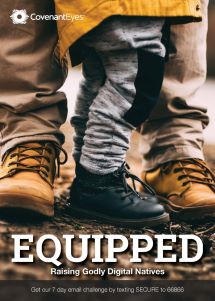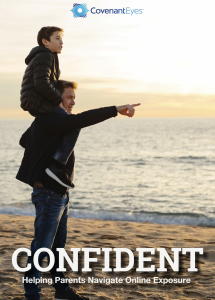Safe Haven Sunday is October 13th
by Diocese of Des Moines | September 9, 2024

Equipping the Family: Having Critical Conversations
We all know it’s there and probably have some idea of how we could access it. Pornography affects some of us more directly than others but there’s no doubt that porn is a problem impacting all of us, and regrettably, it’s not going away anytime soon. Porn has created a culture of its own, and this culture is influencing each one of us spiritually, physically, emotionally, and relationally to a greater or lesser extent depending on if we directly participate in the use of pornography. There are immense moral, social, and spiritual dangers for us and even for our children.
Many of the parents I have the privilege of knowing ask God to guide them in their role as the first and primary educators and protectors of their children to make their children the saints they’re called to be. They want to be good examples for their children and at the same time protect their children from negative influences, including the pornified culture that tries to shove itself into children’s faces at younger and younger ages. They desperately want to keep pornography from creeping into their children’s lives, but they’re just not sure how to do that.
If you’re a parent, does this sound like you?
If so, then I have good news! Through some survey findings and a bit of research, here are a few practical steps that any parent can take regardless of your technical knowledge.
In 2016, a large US Catholic high school anonymously surveyed the majority of their male students on pornography use. The results below, published here without naming the diocese at its request, are the cumulative percentages for all grades. The survey was administered anonymously during Theology classes.
(There are several questions where percentages did not equal 100%, possibly due to incorrectly filled out scantrons and quick rounding of percentages.) Here is the data from the anonymous survey:
1. How often do you typically view pornography?
- More than once a day (6%)
- Daily (15%)
- Not daily but more than once a week (49%)
- Once per week or less than once per week (20%)
- I do not view pornography (11%)
2. What device do you MOST use to view pornography?
- Smartphone (57%)
- iPad/Tablet (24%)
- Home computer (7%)
- I do not view pornographic websites (10%)
3. Where do you view pornographic materials?
- In my bedroom (61%)
- At my “study space” (6%)
- Other locations in my house (21%)
- In my car (5%)
- I do not view pornographic websites (11%)
4. What pornography do you prefer to view?
- Pictures of people in suggestive poses but fully clothed (3%)
- Pictures of people in suggestive poses but scantily clothed (8%)
- Pictures of naked people (23%)
- Video of people performing various sex acts (58%)
- I do not view pornographic websites (8%)
5. What feeling do you usually experience before viewing pornography?
- Loneliness (20%)
- Anger (15%)
- Anxiousness (14%)
- Frustration (3%)
- Boredom (48%)
Here’s what stands out about this survey. A high percentage of pornography consumption by high school students happens on smartphones (57%), in the bedroom (61%), and/or when they’re bored (48%). Thankfully, these are things parents can control.
In 2016, the Barna Group published its study The Porn Phenomenon: The Impact of Pornography In the Digital Age, wherein they state that 88% of teens (children ages 13-17) have a phone and 82% of teens sleep with their phone in their bedroom. Further, the survey explains that 48% (nearly half) of preteens (children ages 9-12) have a phone, and of those, most (72%) sleep with their phone in their bedroom.
If you’re like the majority of parents, you’ve chosen to provide your children with a smartphone and internet access. Sometimes, this decision is made without fully understanding all of the ways in which our children can access pornography. But the following tips can help limit your child’s exposure to inappropriate content:
1. Lead by Example
Parents influence their children at every level. So why, then, wouldn’t parents use of the internet and pornography affect their children, and most likely even their children’s friends? Parents need to be a model of accountability to help their children see the value of it.
As a first step, download Covenant Eyes to all devices you, as the parent, use on a regular basis. Covenant Eyes is an accountability software that monitors websites visited, search terms used, and videos watched, designed to start a conversation about healthy online habits. Find others to be your Covenant Eyes’ Allies as well. These might include your spouse, but they can also include any trusted friends or colleagues.
Why is this critical? Children and especially teens need to know they are not being targeted because they are kids. Accountability is valuable for everyone. This is ultimately something you hope they will continue to use into their adulthood. Show them how valuable it is by starting with you.
2. Protect Your Family’s Devices
Use parental controls, and if a device doesn’t provide or allow parental controls to be downloaded, don’t buy it for them. Again, as another layer of protection, use Covenant Eyes on your family’s smartphones, tablets, and computers.
3. No Smartphones, Tablets, Computers, or TVs in the Bedroom
Keep computers in an open room. Don’t allow devices in your children’s bedrooms that can access the internet or cable.
4. Talk to Your Children
Sit down with your children to explain why you have installed Covenant Eyes. Begin by talking about the problem you are trying to solve. Unless you have reason to believe your children have done something wrong online, and unless you have spoken with each child privately about those misuses, do not presume your children are guilty of anything. The goal of this step is not to communicate that you are displeased about what they do online, but to tell them how easy it is to access harmful material on the internet.
The aim is to manage small issues before they become big problems. Parents have the biggest influence on their kids’ behaviors–more than their friends, school, or parish church. Put that influence to use. Set aside times to talk to your kids about their God-given sexuality. Be prepared to talk to your child or teen on the fly when opportunities present themselves. Talking isn’t preaching. Be willing to listen, too.
5. Give Your Kids Responsibilities and Encourage Life-Giving Hobbies
It’s a more and more common occurrence that our young people aren’t given responsibilities at home or in the broader life of the community. God has given them many gifts to use and share, so we must give them the opportunity to do so! Both young and teenage children can really thrive when given responsibilities like folding clothes, drying the dishes, mowing, and meal planning or helping cook once a week.
Children are also bursting with energy and ways to be creative. Pay attention to what they enjoy and what comes naturally to them, and cultivate that in the child. Are they good at drawing? How about the guitar? Does your son enjoy wood working? Maybe your daughter likes taking photographs?
Encourage growth in these areas and other hobbies they have interest in. This will get them away from the TV and smartphone, which decreases their likelihood of exposure and ongoing use of pornography.
In the digital age, it’s not a matter of if your child will see something inappropriate online. It’s only a matter of when. Although no plan is 100% safe, I believe that following the steps above will significantly decrease the opportunities for our pornified culture to have undue influence on the hearts and minds of our precious children.
Free Resources Available to Individuals and Families
This awareness day is inspired by the United States Conference of Catholic Bishops’ formal statement Create in Me a Clean Heart: A Pastoral Response to Pornography, where the bishops explain, “The use of pornography by anyone in the home deprives the home of its role as a safe haven and has negative effects throughout a family’s life and across generations.”
By celebrating this awareness day with the theme “Equipping the Family: Having Critical Conversations,” we as a community are once again saying that we want holy, healthy, and safe homes, free of pornography and other online threats that deprive the home of its role as a safe haven.

Equipped
Raising Godly Digital Natives
Available for both Catholics and more general Christian audiences, Equipped is short enough to read while waiting for your son’s orthodontist visit to finish, but full of our best tips for helping you guide your children through a pornified world.
In this ebook, we will show parents how to have honest conversations about self-image, sexuality, sin, and shame, provide proven methods for training our children how to be media literate, and more.
Download eBook
 Confident
Confident
Helping Parents Navigate Online Exposure
When a parent discovers her child or teenager has been looking at pornography, it can be alarming, hurtful, even frightening. In the confusion of the moment, it is important for parents to understand that these are not uncharted waters.
Available for both Catholics and general Christian audiences, this ebook provides a full step-by-step guide for parents.
Download eBook